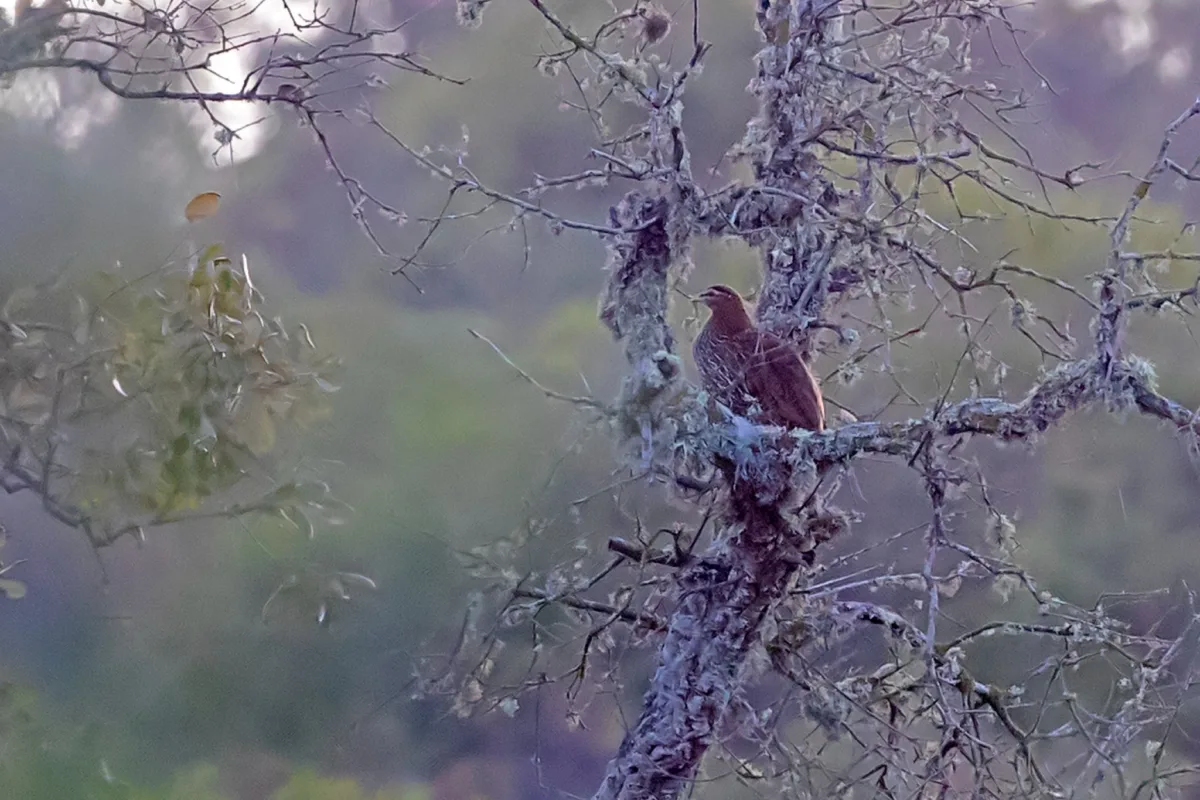A report on recent efforts to conserve the Double-spurred Francolin in Morocco through its reintroduction to its former historic range.
Double-spurred Francolin (Pternistis bicalcaratus) occurs in two disjoint areas. The largest population is distributed mainly in West Africa eastwards to Cameroon and south-western tip of Chad in Central Africa. The second population, which is much smaller and critically threatened, is distributed in Western Morocco.
The two populations are also taxonomically distinct, with the Moroccan population recognized as a distinct subspecies endemic to the country (P. b. ayesha).
Currently, the species’ distribution area in Morocco is restricted to three adjacent areas (together they form a triangle in the map):
- Sidi Yahya Zaer,
- Sidi Bettache,
- Benslimane.
Formerly, the species was much more widely distributed, but disappeared from these regions at different periods of the 20th century. Until the 1970s, the species was still present in the valley of Oued Korifla, Maamora forests, around the valleys of Oued Beht, Oued Bou Regreg, and Oued Oum Rbia, and in the regions of Doukkala and Chiadma. An isolated population occurred in the Souss region, but it started to decline much earlier and disappeared by the 1980s.
Reintroduction of the species into its former range
In its efforts to strengthen the existing wild populations and to reintroduce the species into its historical range, the National Agency for Water and Forests* (ANEF) has undertaken several releases of Double-spurred Francolin in the last few years.
These operations are also part ANEF’s program for the conservation and reintroduction of endangered species into Morocco’s reserves and national parks.
* Known for many years as “High Commissariat for Water, Forests and Desertification Control” (HCEFLCD), and then as “Department of Water and Forests” for a couple of years. In 2022, it was restructured and rebranded as “National Agency for Water and Forests”.
Origin of the released francolins
In preparation for the reintroduction programme, eggs of Double-spurred Francolins were collected from the wild population of Ain Sferjla Royal Reserve (located near Sidi Betach). The eggs were then incubated in the facilities of the game breeding centre “Domaine la Gazelle-Gibiers”, who have the knowledge and the equipement necessary for a successful breeding.
It should be noted that these activities (egg collection, incubation, chick rearing,…) were carried out in partnership with the Moroccan Forestry administration and under their supervision. And the sole purpose of the whole programme is reintroduction to restore and increase the relict Moroccan population of the species.
Reintroduction into the Maamoura Forest (Sidi Allal El-Bahraoui)
The first reintroduction of the Moroccan Double-spurred Francolin were initiated in November 2011 with the release of 300 birds into the ‘Educational Hunting Plot’ of the Royal Moroccan Hunting Federation, located in the Maamoura Forests near the city of Sidi Allal El-Bahraoui. The operation was carried out by the Forestry Administration in partnership with the Hunting Federation (who manages the reintroduction site) and the “Domaine la Gazelle-Gibiers”.
Reintroduction into the Central Plateau
On 31 December 2021, ANEF released a hundred of Double-spurred Francolins into a temporary enclosure near Oulmès. After a period of acclimatization of two weeks, the birds were released into a reserve in the Central Plateau, which is part of the species’ historic range. Note also that the release area is (relatively) not far from the current stronghold of the species in the three regions cited above.

Reintroduction at the Souss-Massa National Park
On 29 December 2022, ANEF released 120 Double-spurred Fracolins in the Souss-Massa National Park. After a 3-week acclimatization period, the francolins will be released into the Rockein Reserve inside the national park.

Well done! How and where did you get the population for the restocking programme? Was the subsp still present in Morocco?
Thank you, Maurizio, for your pertinent question!
Yes, there are still wild populations of the Moroccan subspecies in the three areas mentioned in the introduction, and the birds used in the restocking programme originated from one of these sites.
I have updated the text to include the information about the origin of the released birds.
Another Moroccan endemic was wild Helmeted Guineafowl Numidia meleagris sabyi, which is said to be extinct, but sabyi-like guineafowl are said to still be kept by local people. I wonder if there are any plans to find sabyi or sabyi-like guineafowl, breed and possibly release them?
Hi Jurek,
Indeed, and unfortunately, the Helmeted Guineafowl is considered extinct in Morocco.
As you commented, I also heard from birders and saw some photos taken in Morocco that reportedly show characteristics of the “Moroccan Guineafowl”. However, to my knowledge, no serious effort has been dedicated to this subject. And consequently, there is no plan, current or future, dedicated to this species.
Les Efforts de réintroduction de cette espèce (et d’autres) ne peuvent être qu’applaudis.
Il faut toutefois songer à en assurer un suivi scientifique pour une évaluation concrète et prêtant à conséquences.
A se demander si les eaux et forêts disposent d’un centre de bagage des oiseaux, sachant qu’elles entreprennent des opérations de ce genre depuis des années.
Good news !! however, are there any ‘plans’ under consideration to save the remaining population of Turnix sylvaticus ? a reinforcement of the present population should not be difficult and economically expensive